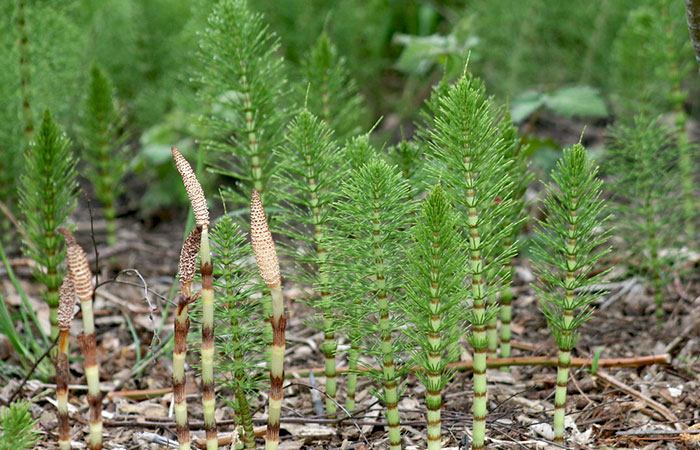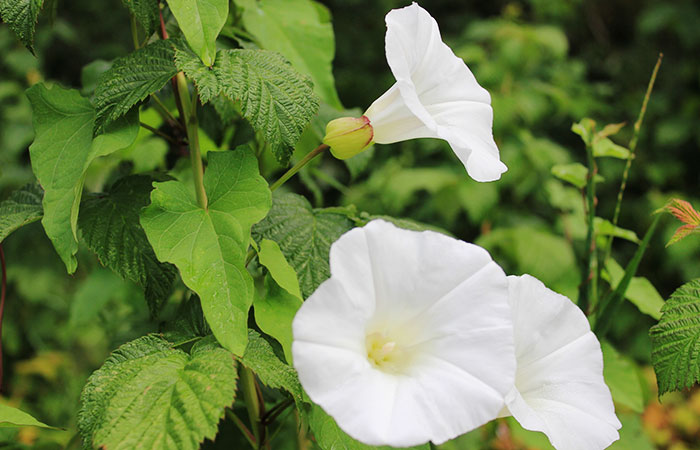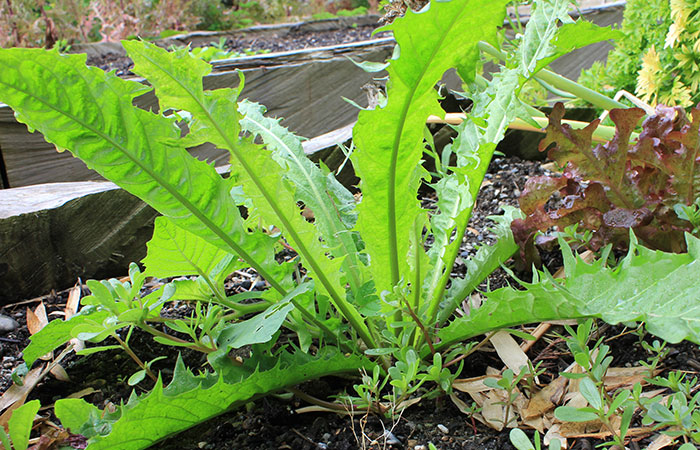Six weeds that reveal soil secrets
Weeds can tell you a lot about your soil conditions, so don’t pull the messengers! At least not before you hear what they have to say.
Just like the ornamental plants you’d probably prefer to grow, many weeds have strong habitat preferences. Understanding why particular weeds are thriving can help you correct underlying soil problems or identify ideal ornamental plants for your conditions.
Most weeds are pretty adaptable, so don't leap to conclusions about your soil based on just one species. But when you see several kinds of weeds that prefer a certain habitat growing together, you might be on to something. Combined with a few other simple soil indicators, paying close attention to your weeds can tell you quite a bit.
Here are six common Pacific Northwest weeds that carry hidden messages about the soil.
1. Horsetail

Horsetail can be very frustrating for gardeners who don't like the looks of it. It's nearly impossible to eradicate. But this ancient native plant has good news for wildlife gardeners: it means your garden contains valuable wetland habitat. Dock and buttercup are also weedy wetland indicators. Even if the soil isn't wet at all times of year, these weeds indicate a unique ecosystem that many animals call home.
The best way to deal with horsetail is often to work with it rather than against it. While it looks odd in a traditional flower bed, the fern-like foliage is actually quite beautiful combined with other wetland plants like spirea, willow, red-twig dogwood, and iris. If you allow your natural wetland areas to thrive, they can attract all sorts of birds and other wildlife.
2. Bindweed

Often called morning glory, the invasive weeds Convolvulus and Calystegia typically have white flowers. A non-invasive cousin of these garden pests that goes by the same common name, the ornamental Ipomea, typically has blue or purple flowers. Bindweed indicates compacted conditions and a hard soil crust, especially when found with quackgrass.
While these weeds are tenacious, the conditions they thrive in can be changed. Start by adding a healthy helping of compost, such as Gardner & Bloome Soil Building Conditioner. Use mulch or cover crops to protect the soil in the winter, and try to hold off on working the soil in spring until it's dry enough to crumble rather than forming large clumps. Plants with deep tap roots can also help naturally break up compacted soils over time.
None of this will completely eradicate a bindweed problem, but it should give you and your more desirable plants a competitive edge.
3. Dandelion

There's a reason dandelion is so ubiquitous here in the Pacific Northwest: it loves our heavy clay soils. Although this adaptable weed can grow in many conditions, a thriving dandelion population in the midst of a struggling lawn likely indicates clay. Although difficult to completely eradicate, dandelion is a surprisingly useful weed, and it can be managed with proper soil care.
As with compacted soil, amending with compost is the best way to lighten up clay soil. If the problem area is a lawn, don't despair. As with all lawn problems, the best prevention is thick, healthy, consistently fed grass. Rehabilitate the area by pulling out the dandelions, aerating, and starting a consistent maintenance program, including top-dressing with compost and fertilizer each year.
Many people don't realize how often lawns need to be fed. We recommend using an organic lawn fertilizer three to four times each year. An easy way to remember the schedule is to feed your lawn on Valentine’s Day, Memorial Day, Labor Day & Thanksgiving. If you can't fertilize that often, the most important dates are fall and early spring.
4. Clover

Another common lawn weed, clover, indicates soil that is low in nitrogen. Symbiotic bacteria provide clover with most of the nitrogen it needs, allowing it to thrive in nutrient-poor soils where lawn grass struggles. Good lawn care, including a consistent fertilizing schedule, will encourage grass and discourage clover.
In the meantime, garden-friendly bees love clover flowers, and these weeds actually add a bit of nitrogen to the soil as they grow. Bacteria that live in specialized nodes on clover roots essentially pull nitrogen out of the air and "fix" it into a form that plants can use. For this and other reasons, some people even choose to use clover as a convenient, low-maintenance lawn alternative.
5. Plantain

Not to be confused with the tropical banana-relative by the same name, this weedy groundcover thrives in the naturally "sour" soils that are common in this region. Other signs of acidic soil include moss predominating over grass, and other weeds like prostrate knotweed.
Adding dolomite lime each year as part of overall good soil care will "sweeten" the soil and help make up for the leeching effect of heavy winter rains. You can also work with the existing conditions by planting acid-lovers like hydrangeas (which will bloom blue in acidic soils), rhododendrons, and blueberries.
6. Chickweed

While many weeds thrive in conditions hostile to more delicate plants, chickweed is typically found in previously-cultivated soil that is rich with organic matter and nutrients. If you find a lush stand of it growing along with healthy lamb’s quarters, that’s the place to build your new vegetable bed for heavy feeders like tomatoes. Don’t forget to continue feeding the soil to keep it in great condition year after year.
As for managing chickweed, it does grow quickly, but it's easy to pull out of the loose, healthy soil it prefers. True to its name, chickweed is a favorite treat for backyard chickens, and it's packed with nutrients. Some adventurous gardeners even choose to eat it themselves.
What do your weeds have to say?
The plant-whisperers at Sky Nursery are happy to help decipher the hidden messages of your garden and lawn weeds. Just bring in a few good pictures or a sample, and we'll help you understand the deeper causes of your weed problems and the best solutions for your particular situation. Understanding what your weeds have to say will help you improve your soil and work with the conditions you have to cultivate a thriving garden.
